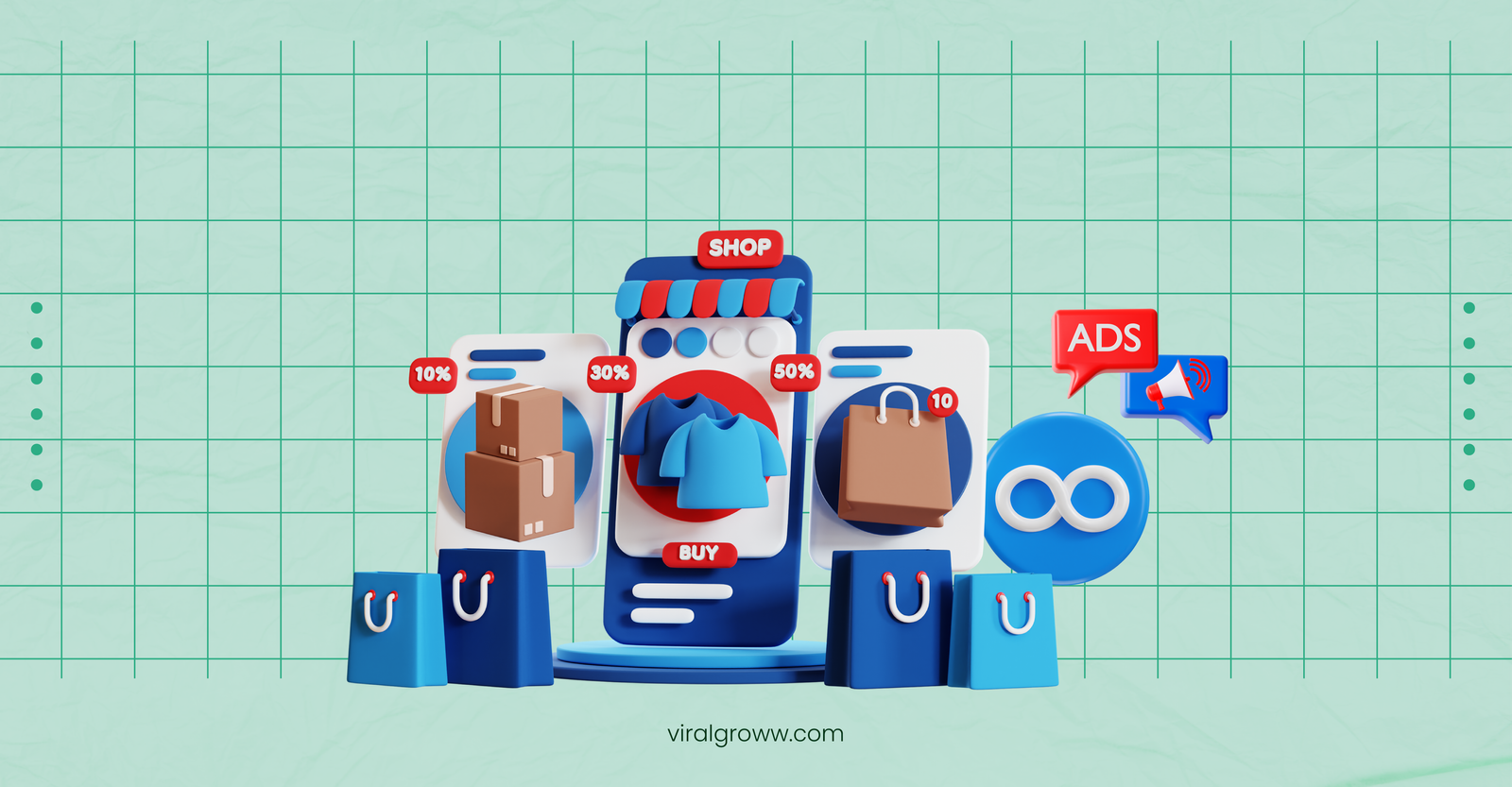Table of Contents
 Introduction to Meta Ads for E-commerce
Introduction to Meta Ads for E-commerce
In today’s digital age, e-commerce businesses are constantly seeking effective ways to reach their target audience and drive sales. Meta Ads, formerly known as Facebook Ads, have emerged as a powerful tool for online retailers to connect with potential customers and boost their bottom line. This comprehensive guide will walk you through the process of optimizing Meta Ads for your e-commerce store, helping you maximize your return on investment and grow your business.
Meta Ads offer a unique opportunity for e-commerce stores to showcase their products to a vast audience across Facebook, Instagram, and other Meta-owned platforms. With over 2.9 billion monthly active users on Facebook alone, the potential reach for your e-commerce business is enormous. By leveraging Meta’s advanced targeting capabilities and diverse ad formats, you can create highly tailored campaigns that resonate with your ideal customers and drive them to make purchases.
Understanding Meta’s Ad Platform
Before diving into the optimization strategies, it’s crucial to understand the basics of Meta’s advertising platform. Meta Ads Manager is the central hub for creating, managing, and analyzing your ad campaigns across Facebook, Instagram, Messenger, and the Audience Network. This powerful tool allows you to:
- Create and edit ad campaigns
- Set budgets and schedules
- Choose ad placements
- Define target audiences
- Monitor ad performance
- Generate reports
Familiarizing yourself with the Meta Ads Manager interface and its features is the first step toward successful e-commerce advertising on these platforms.
Setting Up Your Meta Ads Account
To get started with Meta Ads for your e-commerce store, you’ll need to set up a Meta Ads account. Here’s a step-by-step guide:
- Go to Facebook Business Manager
- Click “Create Account” and follow the prompts to set up your business account
- Add your Facebook page and Instagram account (if applicable)
- Set up your payment method
- Create your first ad account within Business Manager
Once your account is set up, you can start creating your first ad campaign. However, before you do, it’s essential to define your advertising goals clearly.
Defining Your E-commerce Advertising Goals
Setting clear objectives for your Meta Ads campaigns is crucial for measuring success and optimizing your efforts. Common goals for e-commerce businesses include:
- Increasing website traffic
- Boosting product sales
- Generating leads
- Improving brand awareness
- Encouraging app installs
- Promoting special offers or discounts
Each of these goals corresponds to specific campaign objectives within Meta Ads Manager. For example, if your primary goal is to drive sales, you’d choose the “Conversions” objective when setting up your campaign.
Choosing the Right Ad Formats
Meta offers a variety of ad formats tailored to different business objectives. For e-commerce stores, some of the most effective formats include:
- Single Image Ads: Showcase a single product with a compelling image and description.
- Carousel Ads: Display multiple products or features in a single ad, allowing users to swipe through them.
- Collection Ads: Create an immersive shopping experience by featuring a cover image or video followed by product images.
- Dynamic Ads: Automatically show relevant products from your catalog based on user interests and behaviors.
- Video Ads: Use short videos to demonstrate products or tell your brand story.
- Stories Ads: Create full-screen, vertical ads that appear in Facebook and Instagram Stories.
Experiment with different formats to see which ones resonate best with your audience and drive the most conversions.
Creating Compelling Ad Content
The success of your Meta Ads largely depends on the quality of your ad content. Here are some tips for creating ads that convert:
- Use high-quality images: Ensure your product photos are clear, well-lit, and visually appealing.
- Write concise, compelling copy: Keep your text short and focused on the key benefits of your products.
- Include a clear call-to-action (CTA): Tell users exactly what you want them to do (e.g., “Shop Now,” “Learn More,” “Get Offer”).
- Highlight unique selling points: Emphasize what sets your products apart from competitors.
- Create a sense of urgency: Use limited-time offers or exclusive deals to encourage immediate action.
- Showcase social proof: Include customer reviews or testimonials to build trust.
- Ensure brand consistency: Use colors, fonts, and messaging that align with your overall brand identity.
Remember to adhere to Meta’s advertising policies and guidelines when creating your ad content.
Targeting the Right Audience
One of the most powerful features of Meta Ads is its advanced targeting capabilities. To optimize your e-commerce ads, consider using the following targeting options:
- Demographic targeting: Focus on age, gender, location, and language.
- Interest-based targeting: Target users based on their interests, hobbies, and pages they follow.
- Behavior targeting: Reach people based on their purchasing behavior, device usage, and more.
- Custom audiences: Create audiences from your existing customer data, website visitors, or app users.
- Lookalike audiences: Find new potential customers who share similarities with your best existing customers.
- Retargeting: Show ads to people who have previously interacted with your website or products.
Experiment with different targeting combinations to find the audience segments that yield the best results for your e-commerce store.
Setting Your Budget and Bidding Strategy

Determining the right budget and bidding strategy is crucial for optimizing your Meta Ads performance. Consider the following:
- Daily vs. Lifetime budgets: Choose between setting a daily spending limit or a total budget for the entire campaign duration.
- Bidding options: Select from options like lowest cost, target cost, or bid cap based on your goals and budget constraints.
- Ad scheduling: Set specific times or days for your ads to run, focusing on periods when your target audience is most active.
- Campaign budget optimization: Allow Meta to automatically distribute your budget across ad sets for optimal results.
Start with a modest budget and gradually increase it as you learn what works best for your e-commerce store.
Monitoring and Analyzing Ad Performance
Regular monitoring and analysis of your Meta Ads performance are essential for optimization. Key metrics to track include:
- Click-through rate (CTR)
- Conversion rate
- Cost per click (CPC)
- Cost per acquisition (CPA)
- Return on ad spend (ROAS)
- Relevance score
Use Meta Ads Manager’s reporting tools to gain insights into your ad performance and identify areas for improvement. Consider using third-party analytics tools for more in-depth analysis and cross-channel reporting.
Optimizing Your E-commerce Website for Meta Ads
To maximize the effectiveness of your Meta Ads, ensure your e-commerce website is optimized for conversions:
- Improve page load speed: Fast-loading pages lead to better user experience and higher conversion rates.
- Optimize for mobile: Ensure your site is fully responsive and easy to navigate on mobile devices.
- Simplify the checkout process: Reduce friction by minimizing the number of steps required to complete a purchase.
- Use clear product descriptions: Provide detailed, accurate information about your products to help users make informed decisions.
- Implement trust signals: Display security badges, customer reviews, and guarantees to build credibility.
- Create dedicated landing pages: Design specific pages for your ad campaigns that align with the ad message and offer.
By optimizing your website, you’ll improve the overall performance of your Meta Ads campaigns and increase your return on investment.
Leveraging Retargeting and Remarketing
Retargeting is a powerful strategy for e-commerce businesses using Meta Ads. It allows you to show ads to people who have previously interacted with your website or products. Here’s how to implement effective retargeting:
- Install the Meta Pixel: Place this code on your website to track user behavior and create custom audiences.
- Create custom audiences: Build audiences based on specific actions, such as product views, add-to-cart events, or abandoned checkouts.
- Develop tailored ad content: Create ads that speak directly to the user’s previous interactions with your store.
- Set up dynamic product ads: Show users the exact products they viewed or added to their cart but didn’t purchase.
- Implement frequency caps: Avoid ad fatigue by limiting the number of times a user sees your retargeting ads.
Retargeting can significantly improve your conversion rates and help you recover potentially lost sales.
Integrating Meta Ads with Your Overall Marketing Strategy
For optimal results, integrate your Meta Ads efforts with your broader marketing strategy:
- Align messaging across channels: Ensure consistency in your brand voice and offers across all marketing platforms.
- Coordinate timing: Sync your Meta Ads campaigns with other marketing initiatives, such as email campaigns or product launches.
- Use Meta Ads to support content marketing: Promote blog posts, videos, or other valuable content to build brand awareness and trust.
- Leverage user-generated content: Incorporate customer photos or reviews into your ads to increase authenticity.
- Combine with influencer marketing: Partner with influencers and use Meta Ads to amplify their content featuring your products.
By creating a cohesive marketing approach, you’ll reinforce your brand message and maximize the impact of your advertising efforts.
Best Practices for E-commerce Meta Ads
To get the most out of your Meta Ads for e-commerce, follow these best practices:
- Test multiple ad variations: Create different versions of your ads and use A/B testing to identify the best performers.
- Regularly update your product catalog: Keep your catalog current to ensure accurate product information in your ads.
- Use social proof: Showcase customer reviews, ratings, and user-generated content in your ads.
- Implement seasonal strategies: Adjust your campaigns to align with holidays, seasons, or special events relevant to your products.
- Optimize for mobile: Ensure your ads and landing pages are mobile-friendly, as a significant portion of Meta users access the platform via mobile devices.
- Utilize video content: Incorporate short, engaging videos to showcase your products in action.
- Leverage user behavior data: Use insights from your website analytics to inform your targeting and ad content strategies.
By following these best practices, you’ll be well-positioned to create successful Meta Ad campaigns for your e-commerce store.
Common Mistakes to Avoid
When running Meta Ads for your e-commerce store, be sure to avoid these common pitfalls:
- Neglecting to set up proper tracking: Ensure your Meta Pixel is correctly installed and configured to track conversions accurately.
- Targeting too broadly: Refine your audience to focus on users most likely to convert, rather than casting a wide net.
- Ignoring ad fatigue: Regularly refresh your ad creative to prevent users from becoming desensitized to your messages.
- Overlooking mobile optimization: Make sure your ads and landing pages provide a seamless experience on mobile devices.
- Focusing solely on sales: Don’t neglect upper-funnel activities like brand awareness and engagement, which can lead to sales in the long run.
- Ignoring negative feedback: Pay attention to user comments and reactions to your ads, and adjust your strategy accordingly.
- Failing to test and iterate: Continuously experiment with different ad elements and audiences to improve performance over time.
By avoiding these mistakes, you’ll be better equipped to run successful Meta Ad campaigns for your e-commerce business.
Case Study: Viral Groww’s Success with Meta Ads
Viral Groww, a digital marketing agency specializing in e-commerce growth, has achieved remarkable success for its clients using Meta Ads. Here’s a brief overview of their approach:
- Comprehensive audience research: Viral Groww conducts in-depth analysis of client’s target markets to create highly targeted custom audiences.
- Creative ad development: The agency produces engaging, visually appealing ad content tailored to each client’s brand and products.
- Dynamic product ads: Viral Groww leverages Meta’s dynamic ad capabilities to showcase relevant products to potential customers.
- Continuous optimization: The team at Viral Groww constantly monitors ad performance and makes data-driven adjustments to improve results.
- Cross-platform strategy: They integrate Meta Ads with other marketing channels for a cohesive, multi-touch approach.
By implementing these strategies, Viral Groww has helped numerous e-commerce clients achieve significant increases in sales and return on ad spend.
Future Trends in Meta Advertising for E-commerce
As the digital advertising landscape evolves, stay ahead of the curve by keeping an eye on these emerging trends in Meta Ads for e-commerce:
- Augmented reality (AR) ads: Interactive ads that allow users to virtually try on products or visualize them in their space.
- AI-powered personalization: Advanced algorithms that deliver hyper-personalized ad experiences based on user behavior and preferences.
- Shoppable live streams: Integration of live video content with direct purchasing capabilities within the Meta platforms.
- Voice-activated ads: Ads optimized for voice search and smart speaker interactions.
- Blockchain-based ad transparency: Increased transparency and verification of ad performance using blockchain technology.
- Sustainability-focused advertising: Growing emphasis on eco-friendly products and sustainable business practices in ad messaging.
Staying informed about these trends can help you adapt your Meta Ads strategy and maintain a competitive edge in the e-commerce space.
Conclusion
Optimizing Meta Ads for your e-commerce store is an ongoing process that requires careful planning, execution, and analysis. By following the strategies outlined in this guide, you can create more effective ad campaigns that drive traffic, increase sales, and grow your online business. Remember to stay flexible, continuously test and refine your approach, and keep up with the latest trends and best practices in Meta advertising. With persistence and creativity, you can leverage the power of Meta Ads to take your e-commerce store to new heights of success.
Get started with Meta Ads optimization for your e-commerce store today!
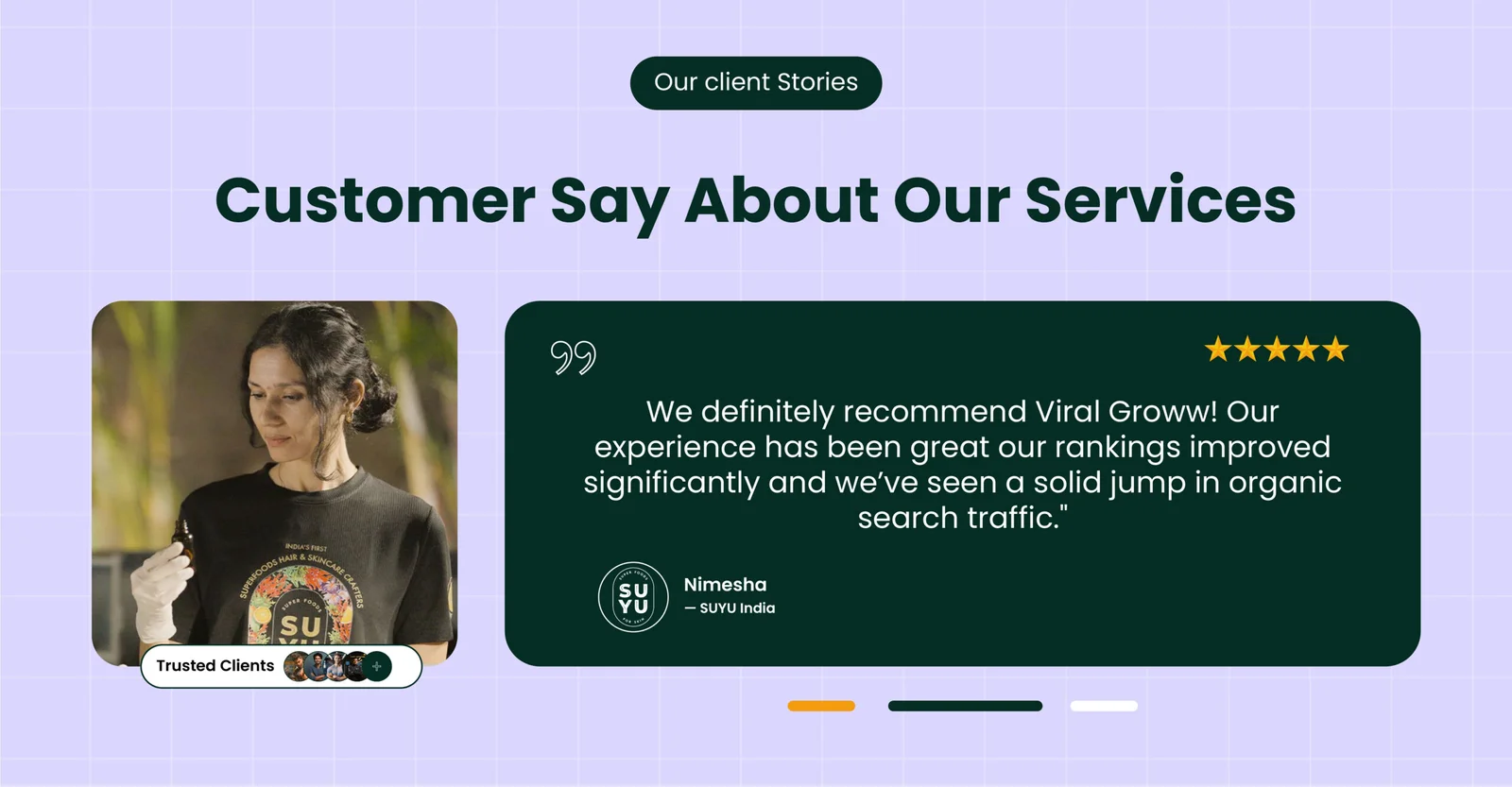
How We 2.5X’d Organic Traffic for SUYU India in Just 5 Months by Following Our White Hat SEO Framework
SUYU India was born with a clear vision—to bring superfood-powered skincare into the Indian market. Co-founded with a deep belief in sustainability.

Scaling a Sexual Wellness Brand with SEO – How We Did It for Ecstasia
Ecstasia is a sexual wellness D2C brand started by Prakhar Raj and Hamid Iqbal in December 2024. Prakhar, a school friend of mine, works in a corporate job but has always wanted to start his own business.
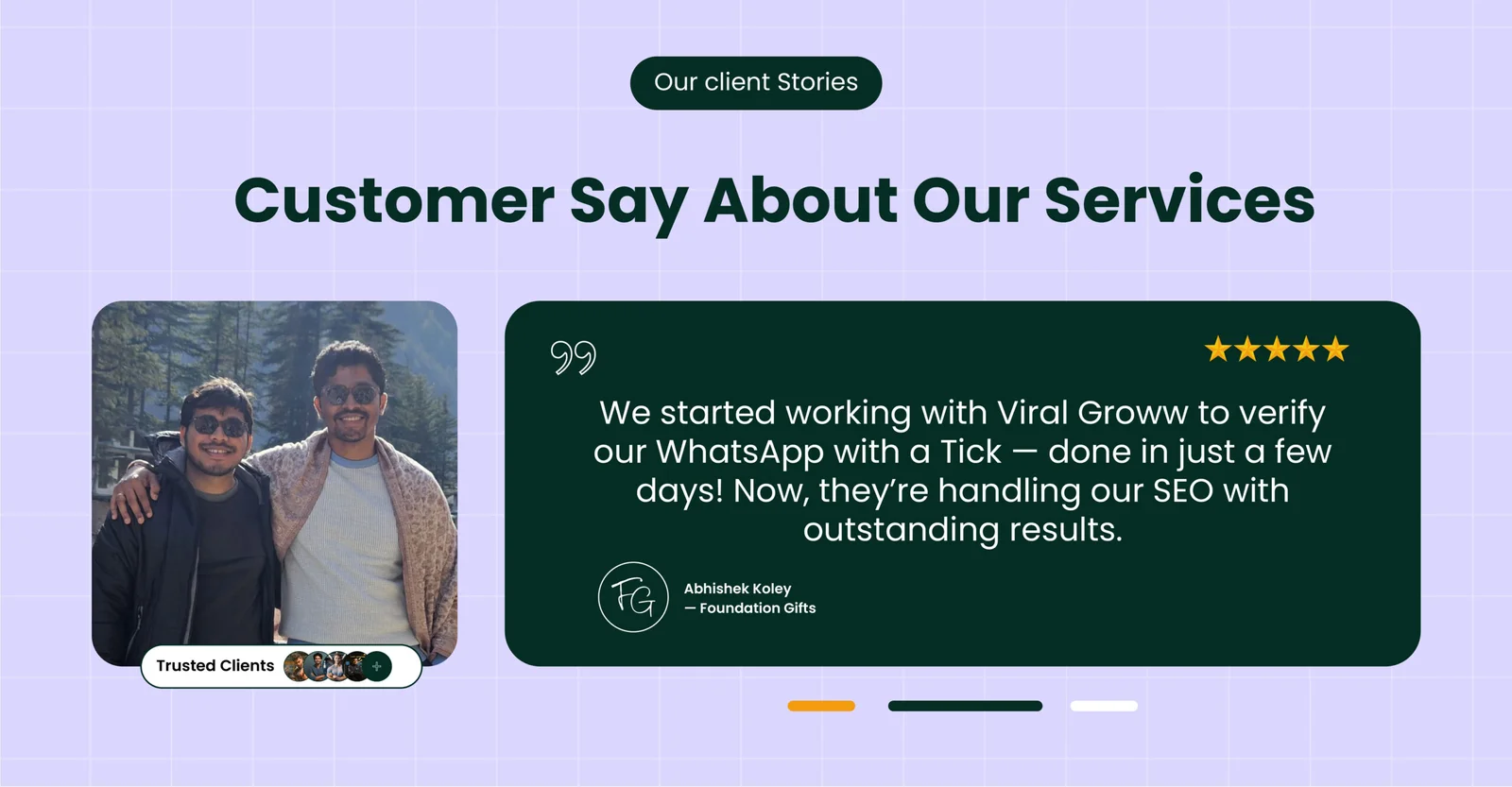
How we got 8.7X Impressions for a gifting D2C brand within 3 Months by doing White Hat SEO
Foundation Gift was started by Rakesh Adak and Abhishek Koley with a simple idea — gifts should feel just as special as the moments they celebrate.
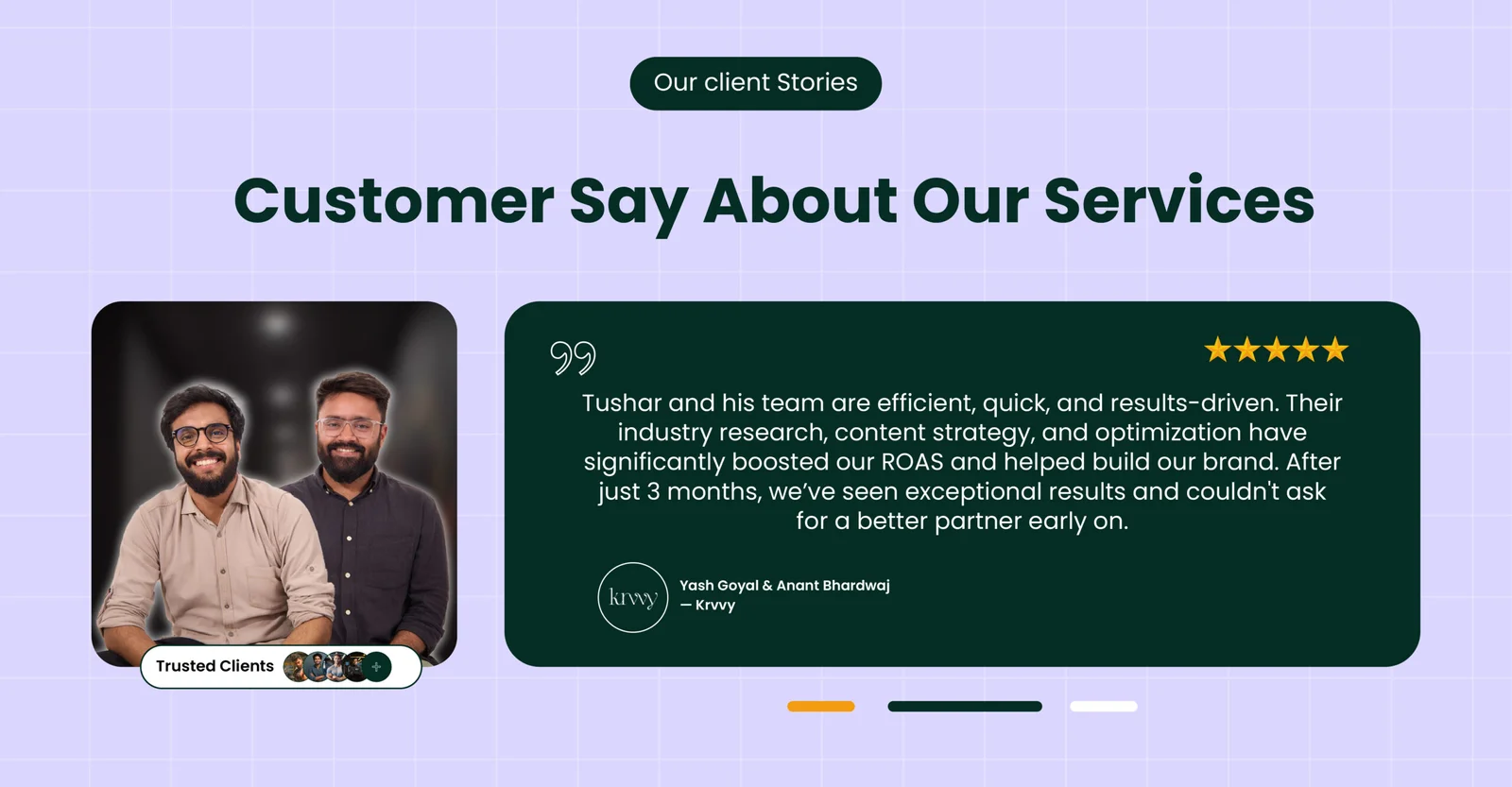
Scaling a Lingerie Brand to 7-Figure Sales in Just 75 Days—Proof Inside!
Krvvy is a modern, forward-thinking lingerie brand committed to redefining comfort and functionality. Designed to elevate the lingerie experience, Krvvy celebrates the beauty of all women, embracing and admiring every curve.
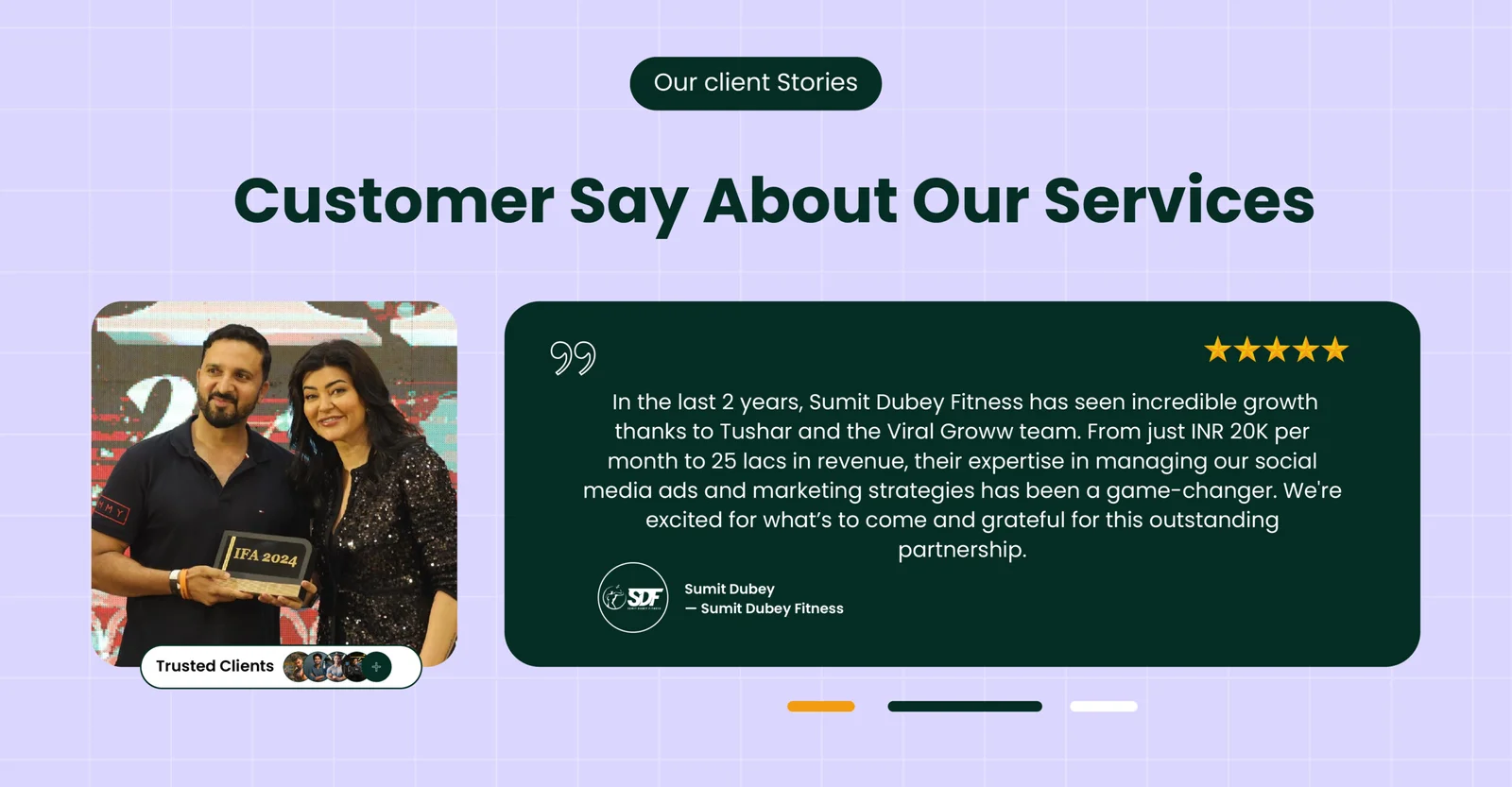
How Sumit Dubey Fitness Classes Transformed into a Fitness Empire with Strategic Digital Marketing
Sumit Dubey Fitness Classes, founded by Sumit Dubey, provides online fitness training with a personalized touch.
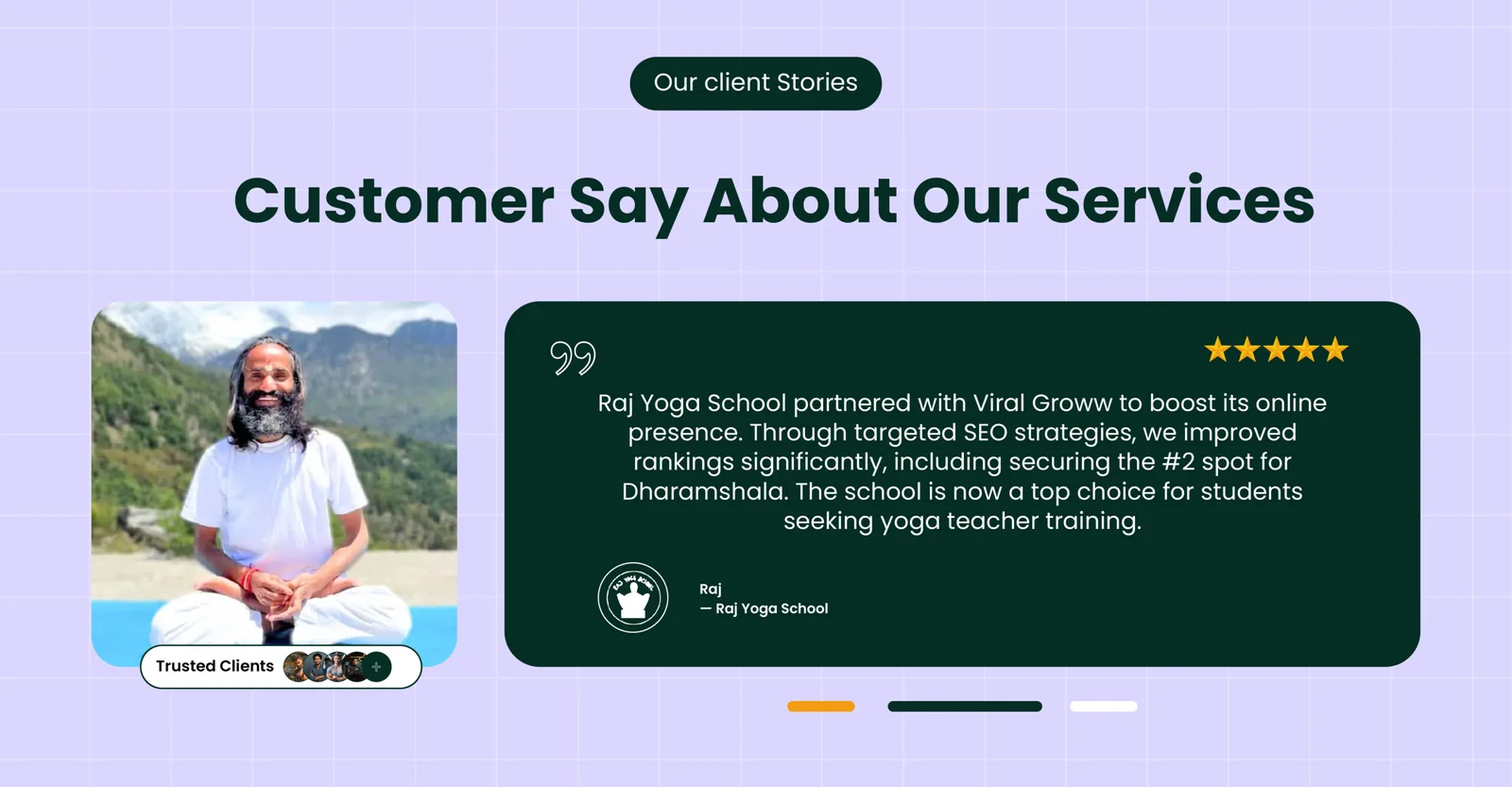
Raj Yoga School’s Journey to the Top of Search Rankings
Nestled between the tranquil peaks of the Himalayas and the sun-kissed beaches of Goa, Raj Yoga School has been a sanctuary for aspiring yoga teachers in India.
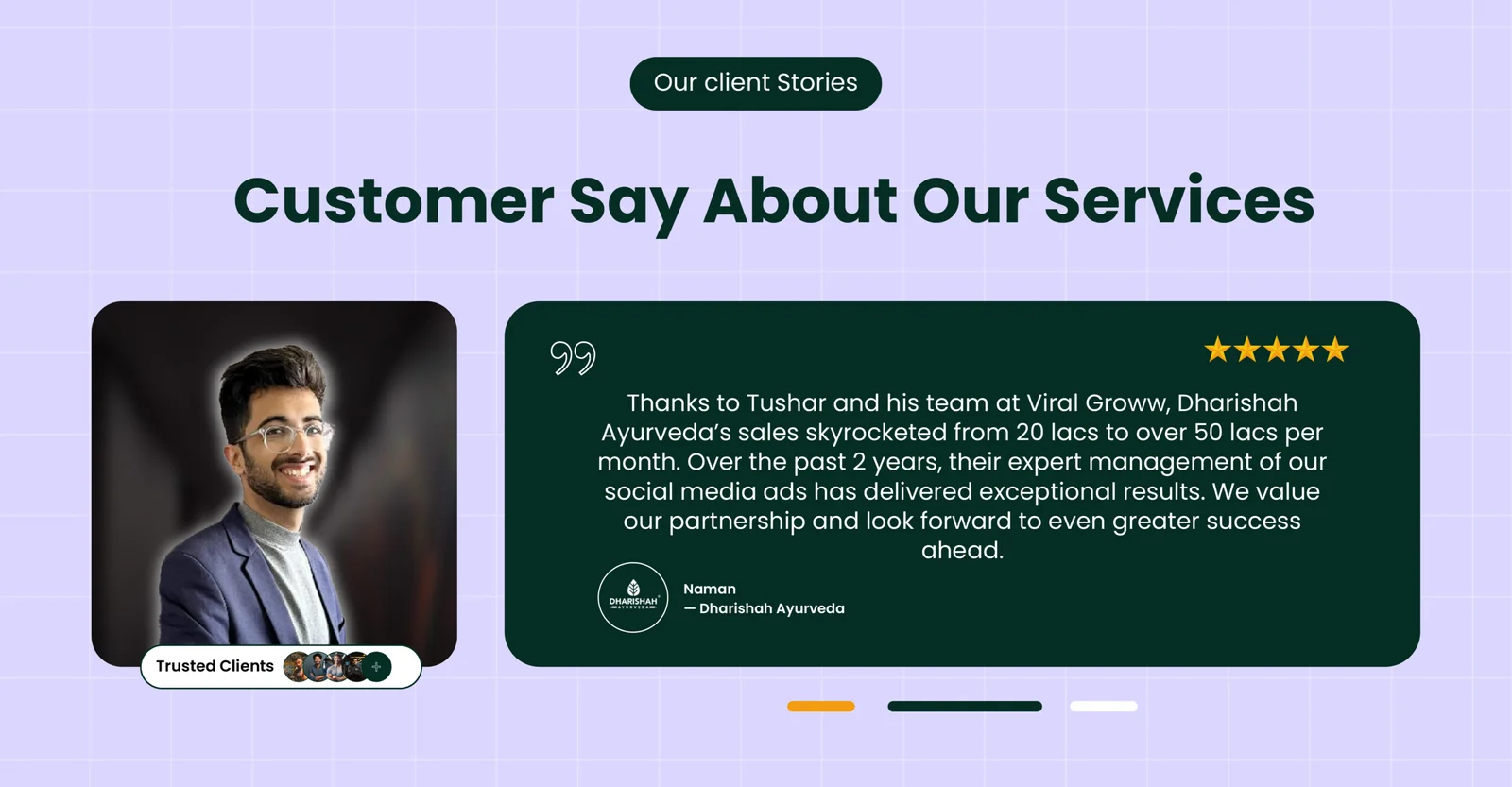
Scaling Dharishah Ayurveda from ₹20 Lakhs to ₹50 Lakhs in Monthly Sales
Dharishah Ayurveda, a promising Ayurvedic brand, had already seen growth through performance marketing, scaling from ₹2 lakhs to ₹20 lakhs in monthly sales (covered in a previous case study).

Building Trust and Revenue for Dharishah Ayurveda with Scalable Facebook Ads
Dharishah Ayurveda, led by CEO Naman Dhamija, is a premium Ayurvedic brand dedicated to promoting natural wellness.
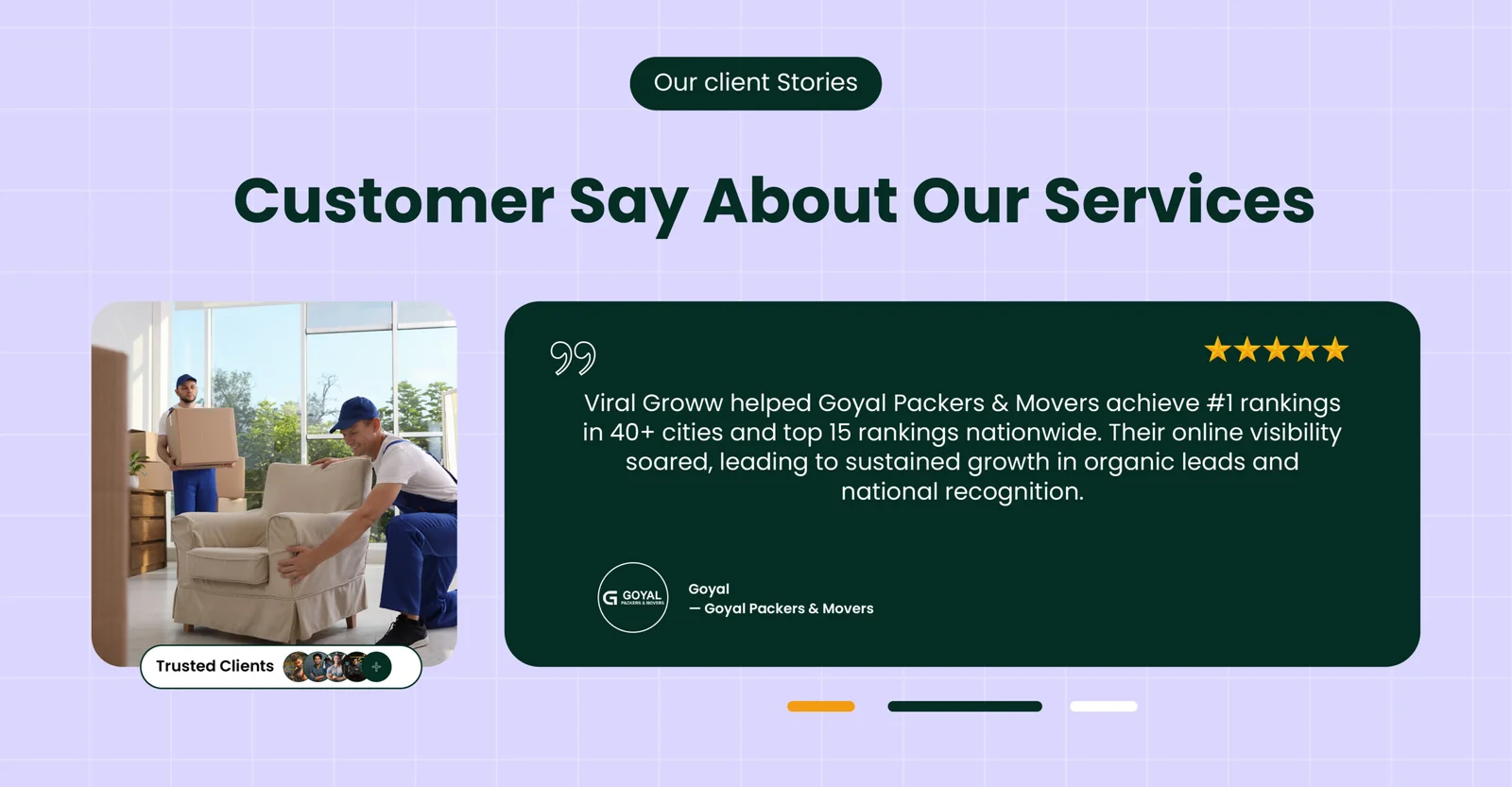
How Goyal Packers & Movers Skyrocketed to #1 in 40+ Cities with White Hat SEO
Goyal Packers and Movers India, owned by Mr. Sampat Singh, is one of the most preferred packers and movers across Northern India, offering exceptional shifting services.


